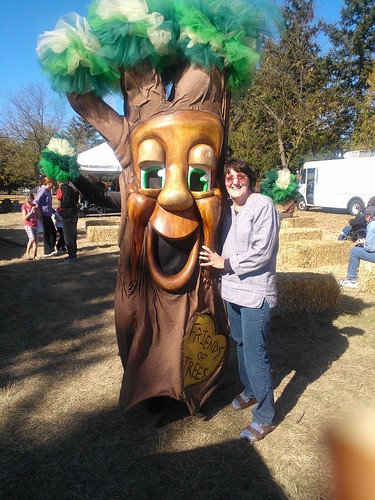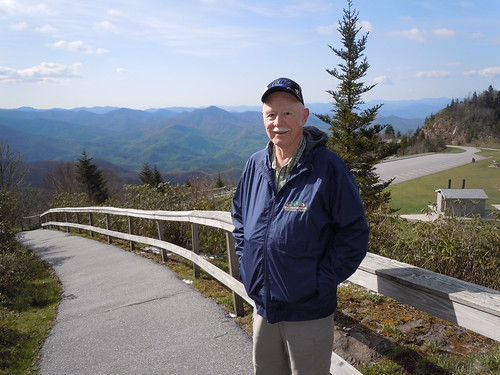What Do Oliver, Cecily & Susan Have in Common?
Though Oliver Sasse, Cecily Schmitt, and Susan Sanders live in different parts of Vancouver—Northeast, Central Vancouver, and the Westside—all three share an appreciation for trees, a commitment to helping their neighborhood, and a wish to do something for future generations.
And all have organized multiple events with the City of Vancouver Urban Forestry and Friends of Trees. What inspires them?

“It’s the mix of the community building with tree planting,” Susan says. “It brings people together.”
Susan lived in Vancouver until she was a young adult. “When I retired and returned to Vancouver in 2008,” she said, “I knew I needed something to occupy myself.”
First she signed up for Vancouver Urban Forestry’s NeighborWoods program to study a range of topics, including tree identification and biology, tree care, city tree regulations, planting, natural area restoration, and the benefits of trees.
To complete the program, Susan needed to organize a tree-related project, and Friends of Trees was one of the groups the city recommended. “Five years later, here I am!” she says.
Also a Master Gardener through the Washington State University Extension Service, Susan recently was appointed to the city’s Vancouver Urban Forestry Commission, which educates about policies, planting, and heritage.
In addition to coordinating plantings, Susan became a summer inspector for Friends of Trees, which broadened her knowledge of trees, she said. Summer inspectors assess the health of each recently planted tree the first summer after planting and provide tree care tips when needed.
“It gave me more reason to walk the neighborhood and help educate people about trees,” she said. “They call me the Tree Lady,” she added, laughing.
Last year, Westside neighborhoods planted 125 trees, and the team of coordinators won Friends of Trees’ Neighborhood Group of the Year. This year they more than doubled that number by planting more than 260 trees, making the Feb. 23, 2013 planting the biggest neighborhood tree planting in Vancouver to date.

Oliver Sasse, who lives in the Airport Green neighborhood, also appreciates the community building experience. “It brings the neighborhood together,” he said, “and allows you to do something to improve the quality of life in the neighborhood.”
Oliver has always appreciated trees. “I was born and raised on a ranch in Montana,” he said. “Some of our property was timberland, and growing up, Dad was big on managing timber.” His father respected the life cycle of trees, he said, and recognized trees’ value to both ranching and farming.
In addition to organizing neighborhood plantings four years in a row, Oliver has applied for and received three grants on behalf of his neighborhood from Vancouver’s Watershed Alliance, which lowered the cost per tree in his neighborhood from $50 to $25 each.
This year Oliver took on a new, bigger project. When the Evergreen Airport was closed several years ago, the new landowner added streets, lighting and other improvements to serve an active commercial and residential site, which is how the former airport is intended to develop.
“It’s a natural spot for a greenbelt,” Oliver said of the spaces too small for development and the yards of homes that back on the street. He brought neighbors, businesses and agencies together to plant trees with low branches in these spaces to reduce the noise and light impacts during a neighborhood planting on March 16.

Cecily’s path to improving her community has been somewhat different from Susan’s and Oliver’s. Her home in the Ellsworth Springs Neighborhood backs onto a wooded area that was untended for years. In 2008, when her home was broken into and the burglars disappeared into the woods, Cecily met with Vancouver police to discuss how to prevent it from happening again in her neighborhood. Since then, Cecily has brought neighbors together five or six times to pull ivy and collect trash from the wooded area.
“I wanted people to get to know each other,” she said. Three of her neighbors regularly bring fruit, yogurt and pizza for the volunteers, and local youth groups and children have pitched in. “They love it so much they come back time and time again,” said Cecily.
Cecily has also helped organize her neighborhood’s tree planting and volunteered at local natural area restoration projects.
Friends of Trees’ partnership with Vancouver began informally in 2001, when two trees were planted in Edgewood Park. Over the years, the number of trees planted each year has increased. Last year, Friends of Trees planted 334 trees in more than 30 neighborhoods, bringing the trees planted throughout Vancouver to more than 2,500.
Since 1989, Friends of Trees has been bringing people together in the Portland-Vancouver and Eugene-Springfield areas to plant and care for city trees and green spaces.
Friends of Trees’ partnership with Vancouver began informally in 2001, when two trees were planted in Edgewood Park. Over the years, the number of trees planted each year has increased. Last year, Friends of Trees planted 334 trees in more than 30 neighborhoods, bringing the trees planted throughout Vancouver to more than 2,500.
The city schedules four plantings with Friends of Trees each year. Charles Ray, Vancouver’s urban forester, anticipates 450 new trees each year over the next five years.
Cities are increasingly planting trees as an inexpensive and efficient way to manage stormwater runoff. Trees also improve air quality, provide shade, lower energy use, and increase neighborhood livability.
Many feel that the greatest benefit, though, is the community spirit inspired by Friends of Trees’ neighborhood plantings.
Planting trees also leaves a lasting legacy. “I like the process of knowing that you’re doing something for the future,” Susan said. “It’s a real looking-forward kind of activity. You’re doing something for future generations.”
This story was featured on the front page of the March 2013 issue of The Messenger.
-TR
